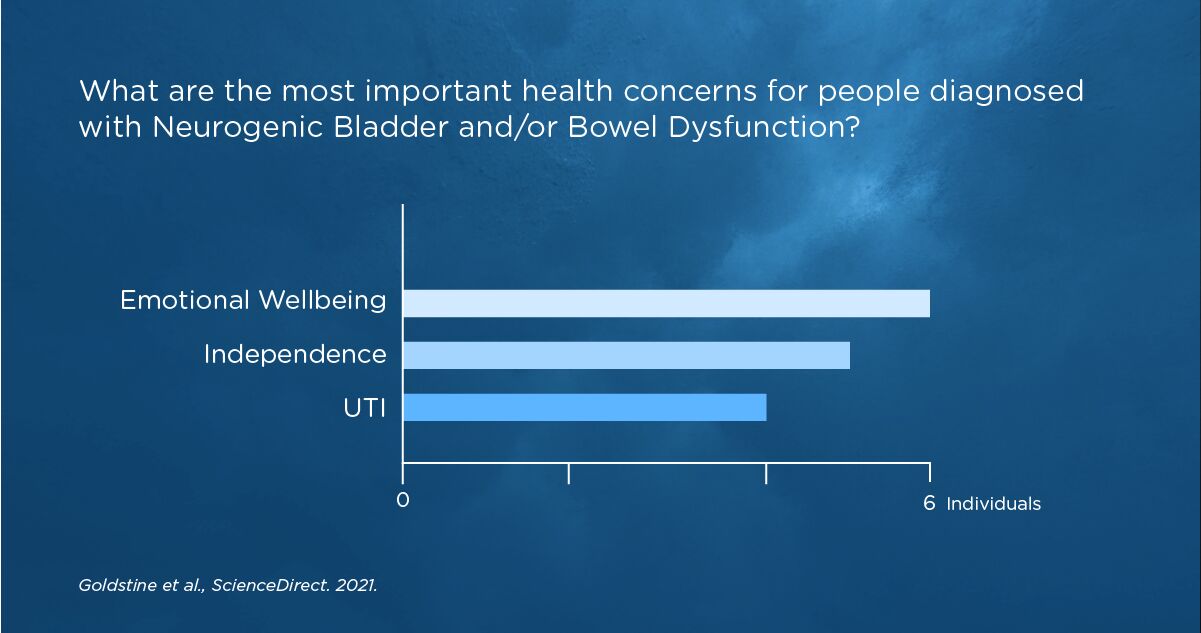
Publication highlight Jimena Goldstine, Kari Knox, Joke Beekman, Hanny Cobussen Boekhorst, Alessio Conti, Mikel Gray, Gary Inglese, Amanda England, Gianna Rodriguez, Justin Stanley, Stephanie Vaughn, Susan E. Howlett and Kenneth Rockwood
A patient-centric tool to facilitate goal attainment scaling in neurogenic bladder and bowel dysfunction: path to individualization. People with nervous system disorders often experience neurogenic bladder and/or bowel dysfunction. The associated symptoms can be physically, socially, and psychologically challenging in ways that are highly individualized. This heterogeneity makes it difficult to quantify change in an individual’s symptoms using standardized outcome measures. Personalized assessment tools are designed to capture the heterogeneity of an individual’s experience with various treatments and devices in different disease states.
Goal attainment scaling — GAS, is an established, individualized assessment tool that enables patients/caregivers to identify and track their own treatment goals. A crucial step in GAS is to set quantifiable, condition-specific goals, allowing measurements over time. It has been shown that actively involving patients in healthcare decisions e.g., goal setting in GAS has the potential to improve clinical outcomes.
Although patient-centered outcome measures and quality of life measures are often used for people with neurogenic bladder and/or bowel dysfunction, few assessment tools have been designed for this specific population. Seeking to address this lack, the research group aimed to develop a clinically meaningful menu of goal areas applicable to anyone living with neurogenic bladder and/or bowel dysfunction, with a view to facilitating the use of GAS in this population.
This qualitative study involved 12 individuals living with neurogenic bladder and/or bowel dysfunction from the United States and the UK, together with a multidisciplinary expert panel of clinicians.

From the participant and clinician feedback, the neurogenic bladder/bowel goals were subdivided into 3 main domains:
- Impact on Life
- Treatment and Management
- Symptoms and Complications
Each domain had a number of goal areas and subgroups for specific problems.
- The results reveal that the participants expressed a strong desire for clinicians to recognize their individual challenges.
- It was also clear from the results that the participants endorsed the use of the goal menu, and the value of such a tool.
“You might be a urologist, but dealing with me is totally different than dealing with the other 10,000 patients you have.” —Adult living with bladder and bowel dysfunction after SCI
“I never really actually had something like this where I could break down all different sections and just make goals.” —Adult living with bladder and bowel dysfunction after SCI
The aims of this study were to describe the lived experiences and challenges faced by people affected by neurogenic bladder and bowel dysfunction. This outcome provided information about patients’ perspectives that is both necessarily subjective, and allows for the incorporation of new goals that may not be obvious to clinicians. Even so, it provides a standardized and quantifiable method for rating change by using GAS.
This outcome provided information about patients’ perspectives that is both necessarily subjective, and allows for the incorporation of new goals that may not be obvious to clinicians.
Conclusion
This new patient-centric tool, built with patients and for patients, will more readily enable the use of GAS in individuals with neurogenic bladder and/or bowel dysfunction. It will allow affected individuals to choose from a list of goals that reflect their lived experience or create their own goals, providing a novel, individualized outcome measure.
The next step for this work is to evaluate how the new goal menu can be used to gather data and conduct investigations in routine care, by completing a feasibility study, a critical step for any new outcome measure.